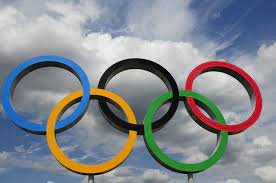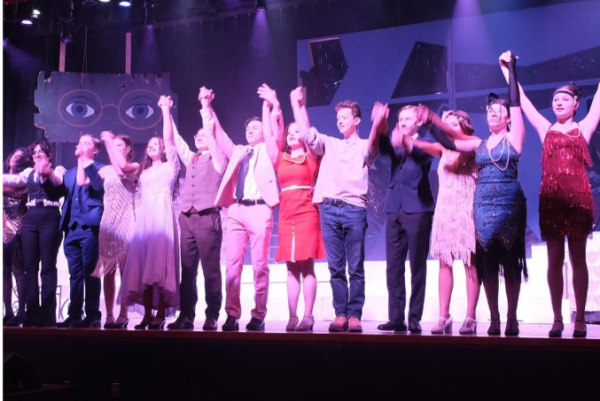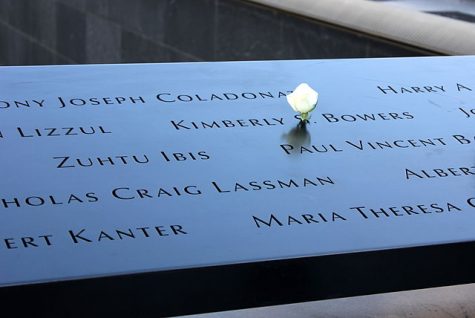Thanksgiving Around the World
November 22, 2021
Most people know the story of the first American Thanksgiving– English Pilgrims had recently arrived in the New World, and battered as they were by the long journey, they made an alliance with the Wampanoag people in an attempt to survive the winter. The Native Americans, through the help of their translator, Squanto, showed the settlers how to plant crops, catch fish, avoid poisonous plants, and tap maple trees, skills essential to New World survival. In thanks, the Pilgrims invited the Wampanoag to partake in a feast. This feast is replicated every year on the Fourth Thursday in November, where American families and friends share a meal to give thanks for the good fortune that year. But celebrations of gratitude aren’t uniquely American. Before Europeans arrived in the Americas, they engaged in traditions of fasting when times were hard, then feasting and thanking God for the good fortune that followed. Likewise, across the Atlantic, Native Americans “had a rich tradition of commemorating the fall harvest” through feasting, music and dance. Even if “Thanksgiving” isn’t what the holiday is always called, and even though traditions and dates vary from country to country, lots of nations continue to give thanks today. Here are four other thanksgiving celebrations and traditions from people celebrating all over the world.
Moon Harvest Festival (China)
Held on the night of the full moon between early September and October, the Chinese Mid-Autumn Festival, also known as the Moon Harvest Festival, is a day for Chinese families and friends around the world to honor their love for one another and give thanks. It is common for celebrators to spend the night on rooftops, honoring the goddess of the moon, Chang’e, giving thanks for the year’s harvest, and looking at the sky with family and friends. Those that can’t be together on this day even make an effort to watch the moon at the same time. Another big part of the celebration is the exchange of Mooncakes, round pastries that symbolize peace and unity in the year to come.
Erntedankfest (Germany)
Did you know that the Cornucopia, a popular symbol of Thanksgiving in North America, actually originated in Germany? It was brought to the Americas by German settlers. While Germany’s thanksgiving celebration, Erntedankfest, started as a festival giving thanks for a plentiful harvest, today it is commonly observed as a religious celebration. Churches, bedecked in seasonal symbols like grains and fruits, lead celebrators in songs and prayers of gratitude. This is usually followed by more festivities like county fairs, fireworks, music, dancing, and food. Many communities also choose a Harvest Queen to wear a crown of wheat during the Harvest Parade.
Sukkot (Israel)
The weeklong Jewish festival, Sukkot, is a time of joy, remembrance, and thanksgiving celebrated in September or October, five days after Yom Kippur. During this holiday, Israelites erect foliage covered booths called Sukkah, similar to the huts their ancestors lived in during the 40 year trek out of enslavement in Egypt. In addition to living in the Sukkah for as much time as possible during this week, participants take the Four Kinds, a tradition in which four plants, citron, palm, myrtle twigs, and willow twigs are waved and used in prayers and blessings. This practice symbolizes the “various personalities that comprise the community of Israel”. Sukkot is as much a time of thanksgiving as it is a celebration of unity.
National Day of Mourning (United States)
While the story of the First Thanksgiving was a symbol of hope and good fortune for the Pilgrims, the long history of English-Native American relations that followed was unfortunately not so bright. On the National Day of Mourning, which deliberately coincides with Thanksgiving Day, Native Americans living in New England gather at Cole’s Hill in Plymouth, Massachusetts to protest the brutal treatment of their ancestors by English settlers, as well as the continual assault on Native American culture since then. The United American Indians of New England (UAINE) sponsors the day’s events, which include a march through Plymouth, speeches by Native speakers, and a final gathering at Cole’s Hill overlooking the rock where Native Americans and the Pilgrims ate together at the First Thanksgiving. People of all different backgrounds are encouraged to participate as well as other minority activist groups. The National Day of Mourning is important because it is a time for Native Americans to come together to call attention to an important truth in American history, honor the Native Americans who first were contacted by English settlers, and promote better treatment of Native Americans today.







